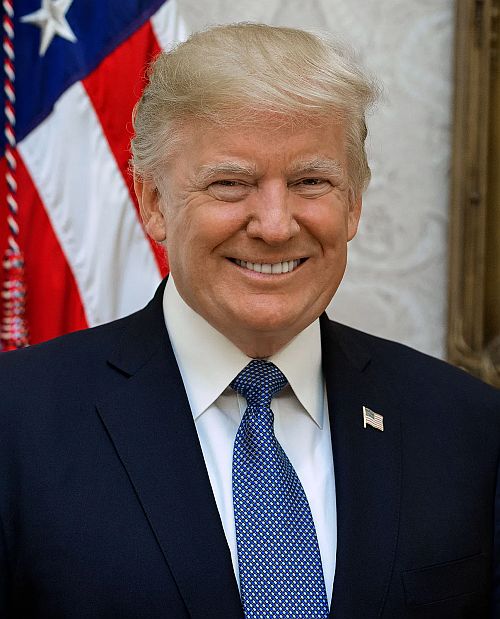Last Updated on March 12, 2025 by Bertrand Clarke
The White House is bracing for a storm of economic turbulence as President Donald Trump prepares to confront a growing chorus of concerned corporate leaders. With his administration’s newly implemented tariffs sending shockwaves through global markets, CEOs from some of America’s largest companies are sounding the alarm, warning of potential mass layoffs and a looming slowdown that could reshape the U.S. economy. As Trump gears up to address these business titans in an upcoming meeting, the stakes couldn’t be higher for both Wall Street and Main Street.
The tariff policy, a cornerstone of Trump’s economic agenda, has ignited a firestorm of uncertainty. Initially hailed by some as a bold move to bolster domestic industry, the levies on imported goods have instead triggered a cascade of unintended consequences. Stock markets, which surged briefly after Trump’s election victory last November, have since faltered, with major indices dipping as investors grapple with fears of shrinking demand and rising costs. Corporate executives, once cautiously optimistic about a post-election spending boom, are now rethinking their strategies—and their workforce projections.
Retail giants like Kohl’s and Dick’s Sporting Goods have emerged as early casualties of this shifting landscape. Recent earnings reports from both companies paint a grim picture: Kohl’s anticipates comparable sales could plummet by as much as 6% this year, while Dick’s has issued guidance that falls well below Wall Street’s expectations. The culprit? A sharp drop in consumer demand that began in the new year, following a brief holiday spending spree that analysts now attribute to shoppers stockpiling goods ahead of tariff-driven price hikes. With inventories piling up and sales forecasts dimming, these retailers are signaling deeper cuts—starting with jobs.
Trump’s challenge is clear: convince these corporate leaders to hold the line. Sources close to the administration say the president plans to use his meeting with top CEOs to deliver a message of resilience. “He’s going to tell them to stay the course, that the tariffs are a short-term pain for long-term gain,” one insider revealed. The president’s argument hinges on the promise of revitalized American manufacturing and a stronger economy down the road. But with layoffs already on the horizon, that promise may ring hollow for workers facing an uncertain future.
The labor market, long a barometer of economic health, is showing signs of strain. Historical data offers a sobering lesson: when stock prices falter, layoffs often follow. In the early 2000s, the dot-com bust saw equity declines trigger widespread job cuts. The 2008 financial crisis delivered an even harsher blow, with plunging markets and soaring unemployment feeding a vicious cycle. More recently, in 2021, a brief market dip prompted companies to trim payrolls—a trend that persisted even as stocks later recovered. Today, with retail sales stagnating and consumer confidence wavering, economists warn that history could repeat itself.
Adding fuel to the fire, small businesses—often touted as the backbone of the U.S. economy—are also feeling the pinch. The National Federation of Independent Business reported a drop in its optimism index last month, reversing a post-election surge. Seven of the index’s ten components weakened, with the steepest decline in firms’ outlook for the economy since early 2022. As demand softens and costs rise, many small business owners are hiking prices to stay afloat. But with sales volumes shrinking, those price increases may not hold—and layoffs could be next.
Airlines, too, are joining the chorus of concern. American Airlines and Delta recently slashed their profit forecasts, citing a pullback in consumer spending on travel as economic worries mount. Just months ago, these carriers were bullish on 2025, predicting a wave of pent-up demand. Now, with discretionary budgets tightening, they’re scrambling to adjust. Southwest Airlines even announced an end to its long-standing free baggage policy, a move aimed at boosting revenue as passenger numbers dwindle. The message is clear: when households prioritize essentials like rent and groceries over leisure, industries like travel take a hit.
For Trump, the timing couldn’t be worse. His administration has staked much of its credibility on delivering economic growth, and a wave of layoffs could undermine that narrative. The president has acknowledged the possibility of an “adjustment period” as tariffs take effect, but he’s banking on CEOs to weather the storm without slashing jobs. Yet, the reality on the ground suggests that may be wishful thinking. Companies facing declining revenues and mounting inventories are unlikely to keep idle workers on the payroll, especially as they brace for higher costs driven by tariffs.
The broader economic picture offers little reassurance. Real retail sales have been largely negative for three years, a trend that tariffs could exacerbate by pushing prices higher. With household incomes stagnating—growth has flatlined over the past 18 months, according to labor data—consumers are already stretched thin. Rising inflation, coupled with a potential spike in unemployment, could tip the economy into stagflation, a scenario where prices soar even as growth stalls. If continued unemployment claims climb, as some analysts predict, the fallout could be swift and severe.
Corporate America’s response will be pivotal. Retailers like Target and Best Buy have warned that tariff-related price hikes are inevitable, while Macy’s and Victoria’s Secret have echoed similar concerns. For these firms, cutting costs has limits—eventually, the ax falls on labor. Kohl’s, for instance, recently announced a 10% reduction in corporate roles, a sign that broader layoffs may be imminent. As CEOs weigh their options, Trump’s plea for stability could fall on deaf ears.
The president’s meeting with business leaders looms as a critical test. Can he convince them to prioritize his vision over their bottom lines? Or will the specter of a slowing economy force their hand, unleashing a wave of job cuts that could spiral out of control? For now, the nation watches—and waits—as the tariff gamble plays out, with the livelihoods of millions hanging in the balance.










